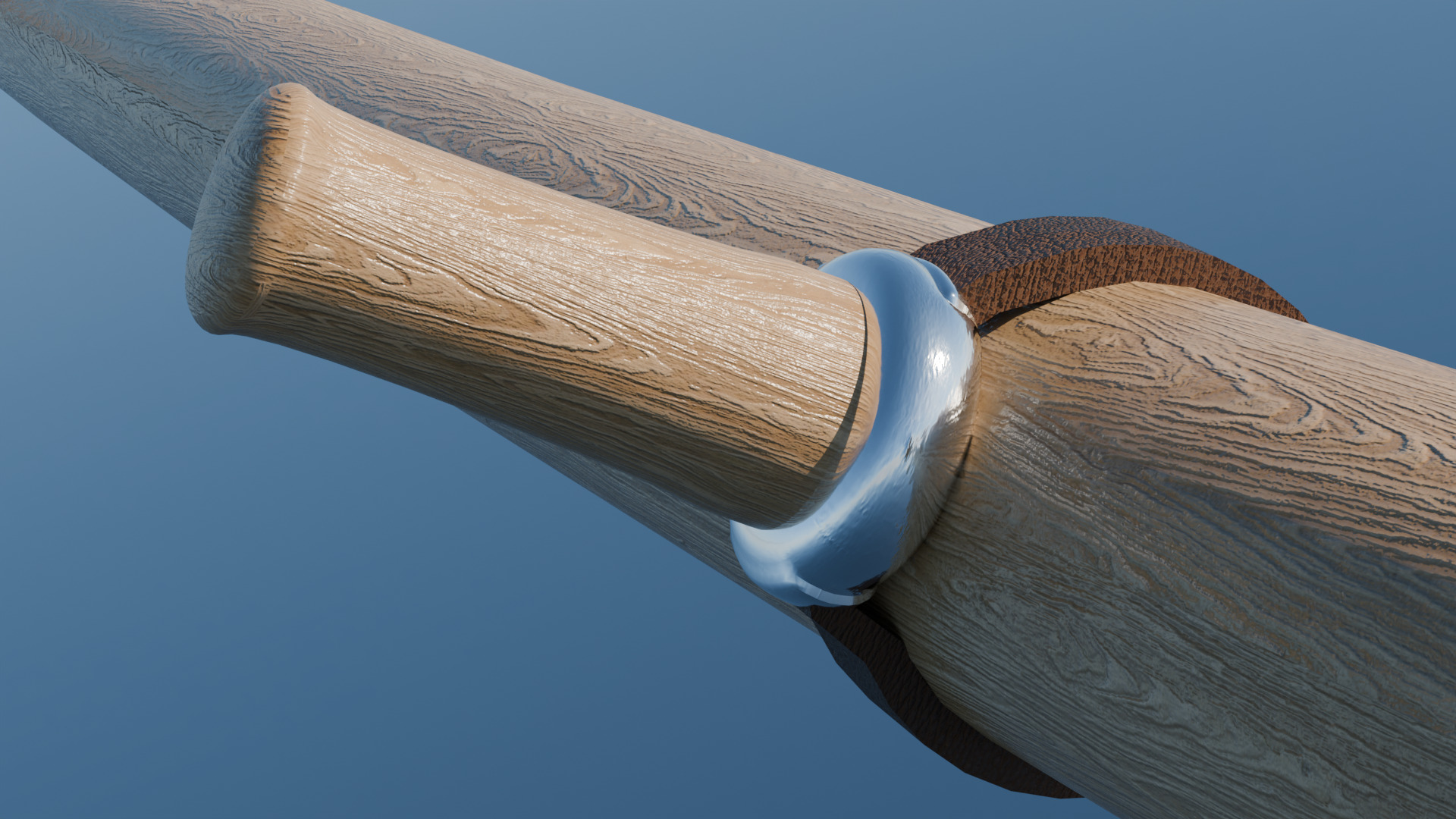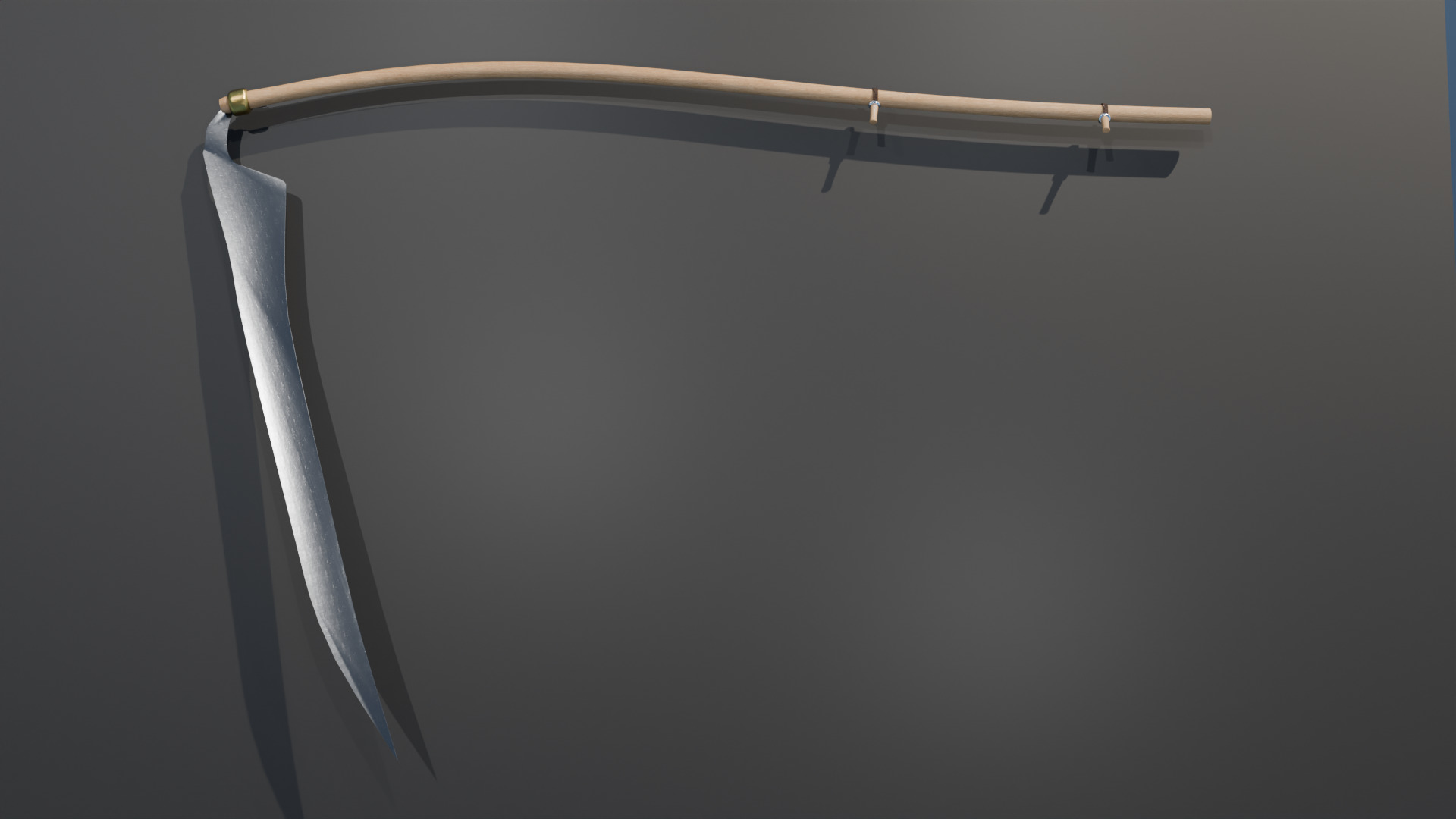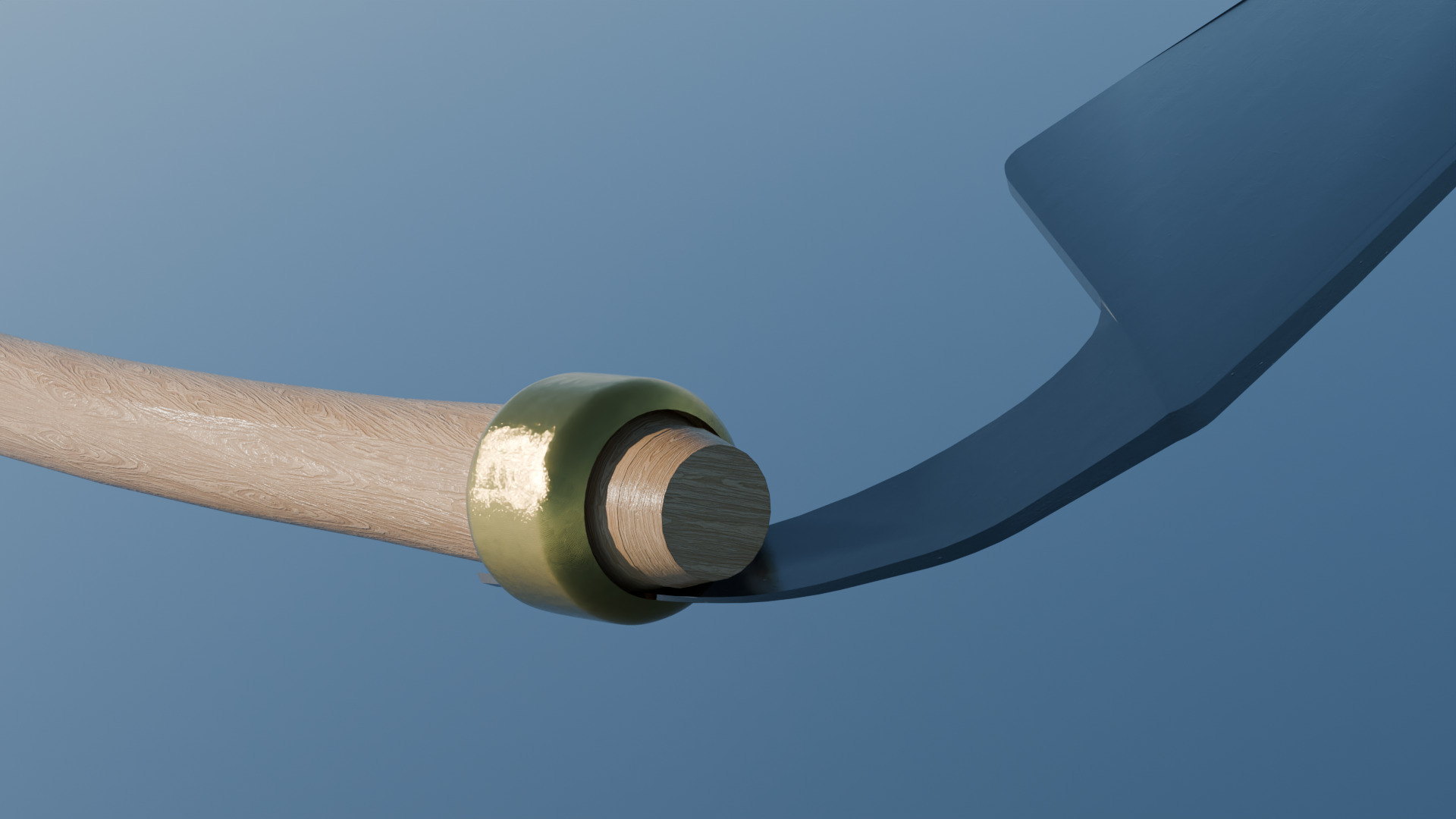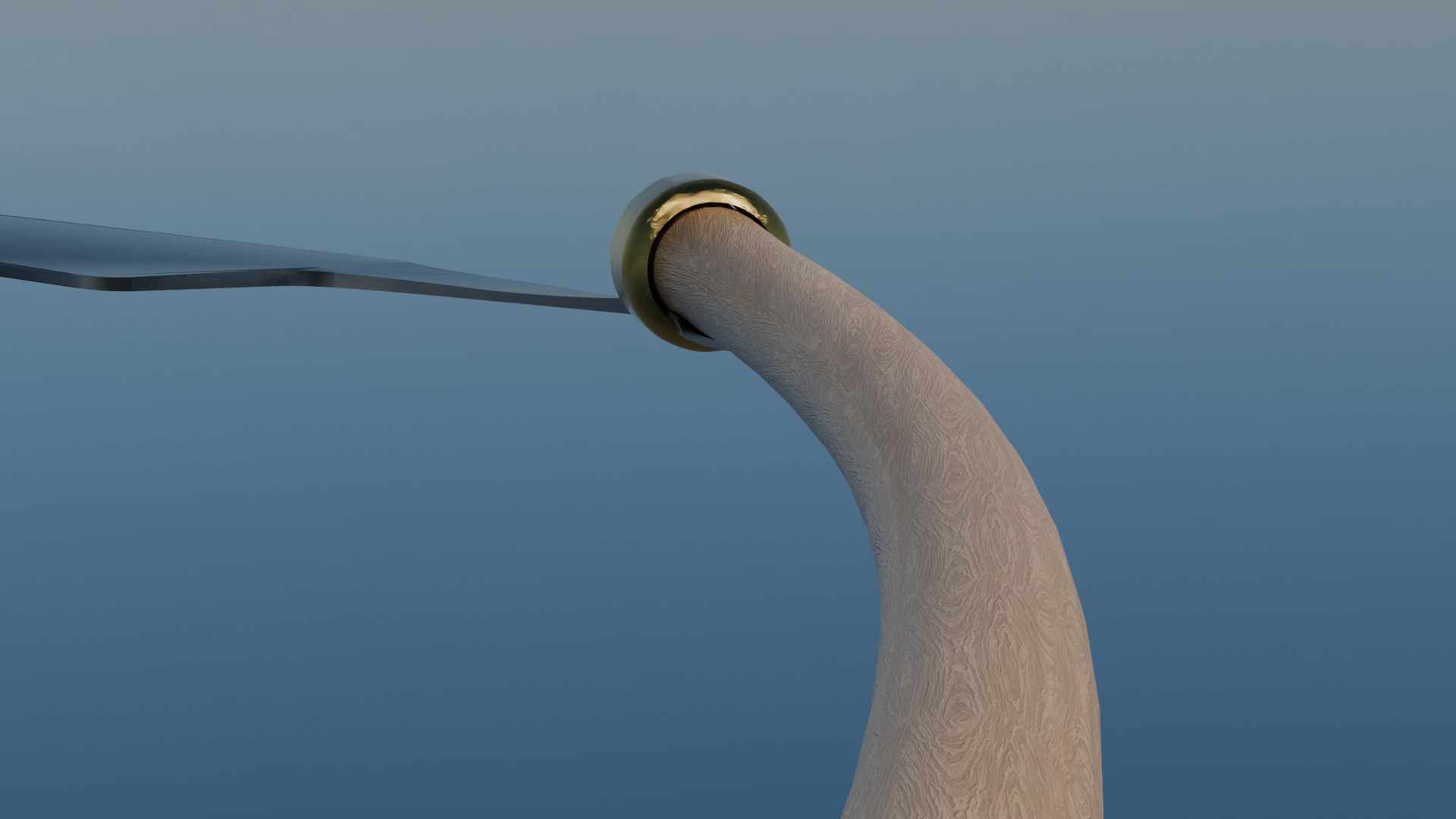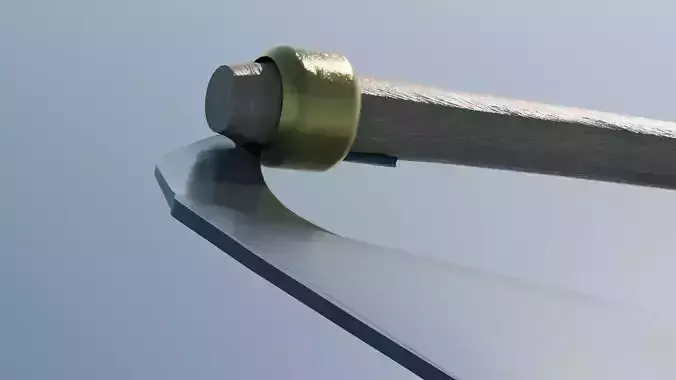
Scythe Blade Low-poly 3D model
The 18th-Century Scythe
The scythe was a vital agricultural tool in the 18th century, used primarily for harvesting crops like wheat, barley, and hay. It featured a long, curved blade attached to a wooden handle (called a snath) and was swung in a wide arc to cut large amounts of vegetation efficiently.
Key Features of an 18th-Century Scythe
Blade: Made of iron or steel, curved for effective slicing.
Snath (Handle): Typically wooden, often slightly curved for ergonomic use.
Hand Grips: Small wooden grips (called nibs) attached to the snath for better control.
Maintenance: Blades required frequent sharpening using a whetstone.
During this period, scythes were essential for manual farming, as mechanical harvesters were not yet widely available. Skilled workers, called reapers or mowers, could cut vast fields using well-maintained scythes.

